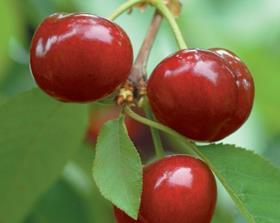
The build up to Chinese New Year is always the peak period on the calendar for China’s fresh fruit import trade - and it’s a peak that many are pinning their hopes on this year after the comparative trough experienced by the market in recent months.
Most importers told Asiafruit that the Chinese market has been tough for much of the past four months, with many attributing the poor run to the fact that the Moon Festival and National Day Holiday fell at the same point in the calendar.
Usually, the Moon Festival falls around the first week of September, so there is a gap before the National Day Holiday on 1 October, but in 2012 it came at the end of September, thereby robbing the market of one of its key sales opportunities.
Rod Hill, import manager of Golden Wing Mau, believes this was a key factor in an exceptionally difficult end to the South African orange season, which had been going well up until the Moon Festival. “The market dropped off a cliff after that,” he noted.
The sales rate for California grapes – another key item – has also been very slow in recent weeks, a factor many attribute to quality issues. “US grapes have had a very difficult and messy season,” said Hill. “They’ve struggled to get colour and the quality has been intermittent and unreliable. Plus, the crop was very short, so people had to pay a lot for fruit and often they couldn’t sell it.“
The North American cherry season, meanwhile, was complicated by “a bad combination of large volumes and poor quality,” according to Ignacio Smith of San Clemente Vitalberry (Shanghai).
Unsurprisingly, importers are looking forward to Chinese New Year – and to the campaigns for the festival’s leading acts, notably Chilean cherries and Peruvian grapes.
“Really popular items are beginning to arrive in the market, wholesalers need to recover from a ‘difficult summer’ and Chinese New Year brings the opportunity to do that, depending of course 100 per cent on getting the right product,” said Smith.
More time to sell
The timing of Chinese New Year (CNY) on 10 February is also very favourable, according to importers, who noted that it would give them 18 days more selling time compared with last year.
“The extended pre-festival period offers more time for sales and logistics,” said Kurt Huang of Shanghai Longwu Wholesale Market. “The crucial reason for the collapse on Chilean cherries last year was the short pre-festival period. Chilean fruits, such as cherries and blueberries, and Peruvian grapes will benefit most from the longer selling period.”
Smith predicted that products arriving in the right condition between 20 January and 5 February should perform particularly well.
Rutger van Wulfen of Prestige China Development agreed that the market outlook is very positive, noting that the Chinese currency remains strong against the US dollar (Yn 6.24). “With the extra selling time, the market should be much less tense this year with more room for improved quality and diversity,” he said.
Nevertheless, many traders appear to be in a more cautious mindset this year, which could be symptomatic of the ‘cherry bloodbath’ of 2012 and concerns that the Chinese economy is not growing as fast as it has been.
While Chilean cherries began arriving by air last month, their prices dropped off the early season super-highs of Yn1,000 (US$160) per carton very quickly, according to Jason Bosch of Origin Direct Asia. “To me it looks like importers and buyers are tired of making losses and are more cautious with their purchases,” he said.
Chilean cherry volumes uncertain
While Chilean cherries are certain to once again dominate the CNY market, just how much volume will arrive this year is impossible to predict at this stage.
The Chilean cherry crop is well down on original estimates, according to importers, although quality and fruit sizing are expected to be better than last year.
“With the new plantings this year, the crop should have reached 16-17m cartons, but people are now saying it could fall anywhere between 11m and 12m cartons,” said Hill. “Last year, they had 14m cartons, of which 8m came to China. Volumes are down dramatically, but they could still come in heavy numbers to China.”
Chilean blueberries are also enjoying their first full season of direct access to the Chinese market this year. The first airfreight arrivals in November out-turned well in terms of quality, according to importers, although volumes were small and prices high.
Most importers believe seafreight is the key to expanding the market, although they’re understandably cautious.
“Successful sea shipment can bring increased profits, but heavy supply might crash the market and quality is more difficult to assure,” said Huang, who expects more than 50 container loads to be shipped to Shanghai.
“The local market can’t take them all, but the comparative lower import cost will be the key incentive to choose Shanghai as a port of entry, he added.
For a full preview of Chinese New Year trading prospects in China and a range of other Asian markets, see the December 2012/January 2013 edition of Asiafruit. To order your copy, click here



